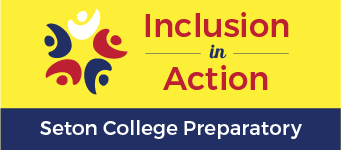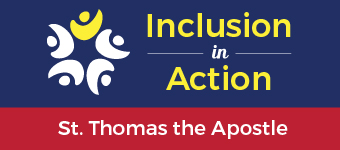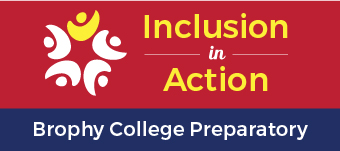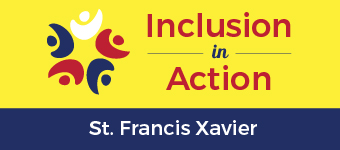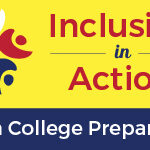
A Family’s Journey Into the Unknown
September 21, 2022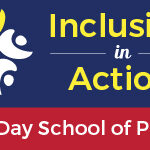
How Two Girls Changed Torah Day
September 21, 2022Seton Catholic Preparatory is Facing Fears to Ignite Inclusion
Today, Seton Catholic Preparatory in Chandler, AZ, is the model of an inclusive school. But just a few years ago, Seton–like many private schools–only served typical students and those with milder and more common disabilities. That began to change in 2019 when the school took its first step toward inclusion by launching its Academic Resource Center (ARC), a program for students with disabilities.
Seton’s ultimate goal was to develop an inclusive school that could welcome all students–regardless of ability. To achieve this, the school developed a three year plan to support students with disabilities, train and support teachers, and lay the foundation for full inclusion. Today, the school serves ninety students with disabilities.
This transition took time and came with its share of bumps in the road. And the biggest obstacles have hinged on fear of the unknown, according to Jennifer Kohl, the school’s Learning Resource Coordinator and creator of the ARC. Families, teachers and others in the school community are uncertain about how inclusive learning will impact them. Seton has been working through the following three questions with families, teachers and the school community to address these fears and develop a vibrant, inclusive school.
Families: How will a diagnosis impact my child?
When Jennifer’s own child displayed signs of needing extra support in elementary school, she was terrified to take the path of an official diagnosis and IEP. “What if they found nothing and then we were left with no support,” she worried. “What if they found something? How would that change us?”
As a special educator, Jennifer sees that same fear in parents who are unsure if they want to take this path for their child. Because some diagnoses have been historically underrepresented in private schools, parents may hesitate to pursue an official diagnosis for fear that it will reduce their child’s educational opportunities. Fear of hearing “maybe this school just isn’t for you” haunts families.
Yet, for Jennifer, identifying her child’s learning disability in math and reading equipped the family and school with a roadmap. “Getting an official diagnosis allowed us to effectively partner with the school to identify the supports my child needed,” Jennifer remembers. “It removed such a huge burden from our family and empowered us to get my daughter the education she deserved.”
Teachers: Can I truly serve these students?
There are many unknowns for teachers too. They may wonder how they will be able to teach different learning needs. They may be concerned that they can’t do everything or know everything necessary. These are reasonable hesitations, yet Seton has been able to address them.
“An environment that supports inclusion is built piece by piece, day by day, and person by person,” Jennifer explains. “It’s so hard to understand what we don’t know, what we don’t have experience in, and to overcome our preconceived notions of what students, teachers, schools ‘should’ look like.”
Because private schools often lack the funding and resources that public schools receive, they rarely have the luxury of rolling out a complete, robust program with a fully trained staff on day one. But, as Seton has proven, it’s no less possible for private schools to become inclusive. All it takes is educators and leaders willing to cast a vision, make a plan, and commit to giving children of all abilities the chance to learn together in the same classroom.
Community: How will this change our school?
Inclusive learning doesn’t just impact students with disabilities. It will, ideally, radiate changes reaching all students, families, faculty, and staff. But change can start to make people uncomfortable.
Jennifer remarks, “So many embrace the mission of inclusion. Yet, that isn’t everyone. We do get comments like, ‘did you hear who they are admitting now?’ and ‘this is no longer a prestigious institution,’ as if the presence of someone with autism or a learning disability diminishes our school rather than enhancing it.”
But if the abundant benefits of an inclusive education aren’t immediately obvious to all, Seton believes that care, consideration, training, and awareness will soon win over everyone in the school’s extended community. “Our school demonstrates that inclusive learning is invaluable for all students,” Jennifer explains. “Students of all abilities learn with and from one another. As classmates, they develop deeper levels of friendship, patience, empathy, and compassion. Everyone benefits when we develop a diverse student population.”
Seton’s evolution toward inclusion started with a supportive administration. The principal and assistant principal both deeply believe that honoring the dignity of each person is essential to the school’s faith and mission. They have set the mission, the tone, and the direction of the school.
“I hate to brag,” Jennifer says, “but I truly have the world's best and most supportive administration. Instead of saying ‘no,’ my principal will ask how we can support all parties so we can say ‘yes’ and grow our enrollment of students with learning needs.”
And that inclusive mindset has made all the difference for Seton and its students.

